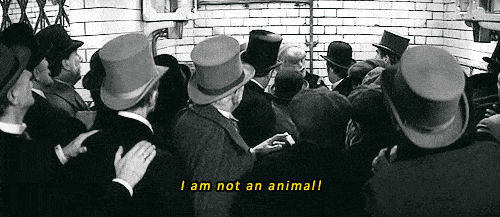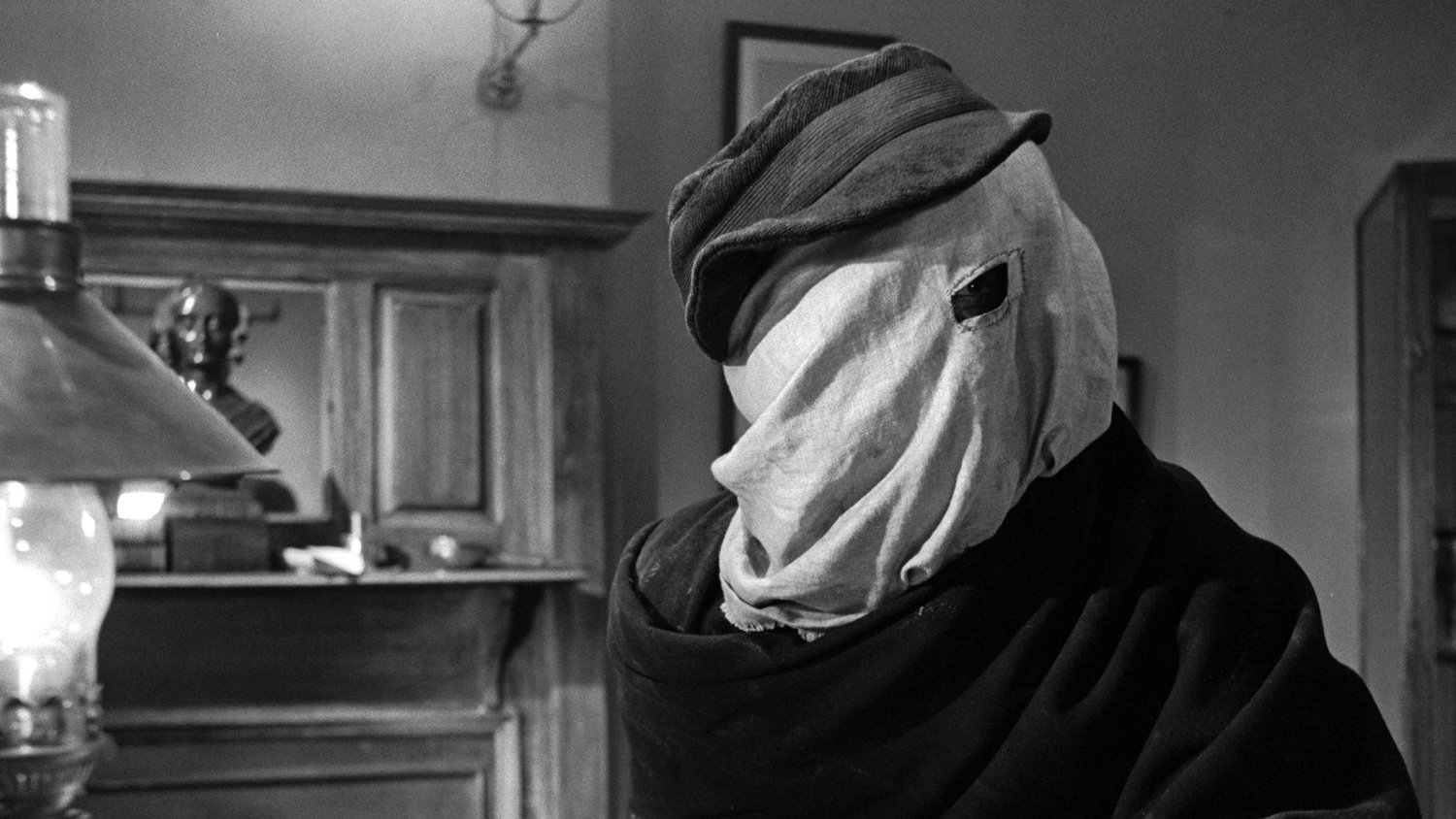It speaks of David Lynch’s absolute discipline that his first Oscar-bait feature didn’t opt for a hokey or crowd-pleasing ending. The closing moments of The Elephant Man are tragic, forceful, and ambiguous all at once, but more than anything, Lynch’s final scene can be viewed as the ultimate culmination of events and the suppressed psyche of his main character John Merrick (John Hurt), aka The Elephant Man. Time and time again Lynch is true to his characters, and it’s no more apparent than his final scenes.
In Blue Velvet, an animatronic bird engorging a helpless worm rounds out Lynch’s gripping portrayal of the American Dream’s bittersweet reality, which has come to encompass his main character Jeffrey (Kyle MacLachlin) for the entirety of the film. Normally Lynch opts for a giant piece of metaphor to culminate his metaphorical tales, but The Elephant Man is one of Lynch’s straight dramas. It’s then no surprise that The Elephant Man is most comparable to Twin Peaks: Fire Walk With Me, both of which feature the downfall of a character steeped in a very real setting, choosing their sendoff to be more a manifestation of their clouded beliefs than Lynch’s ever-present metaphors. But even compared alongside Twin Peaks: Fire Walk With Me’s absolutely devastating final sequence, the progression of The Elephant Man’s final scene is not only the proper sendoff for a man plagued with disease, but one of the most honest and telling bits of cinema that Lynch or anyone has ever produced

Along with it all, The Elephant Man’s ending may even seem a bit out of place on the surface. The cold and unforgiving Victorian streets, full of billowing smoke and gritty working class residents, seem a perfect fit for Lynch, coming off his incredibly dark debut film Eraserhead. But as a straightforward biopic that was co-written by two other Hollywood hopefuls (Christopher De Vore and Eric Bergren), the level at which The Elephant Man was geared towards the Academy doesn’t exactly scream “David Lynch.”
But subject matter aside, the finer aspects of The Elephant Man are stone-cold Lynchian, and it all comes together in those closing moments, when John lies his head down in bed as he goes to sleep, which he knowingly believes could kill him. For while the sheer imagery of a Lynch film may come to define how his cinema is viewed, the pure dedication to his characters shrouds however huge Lynch’s filmmaking ego may be and ultimately comes to define the term “Lynchian”—the scene begins with John staring out his window, and then turning his attention to the card cathedral model he’d been constructing throughout the film. As John stares out the window, it recalls exactly how dire John’s state was not only in terms of his own physical health, but to his place in society as well. Frederick (Anthony Hopkins) notes at one point how John wished to visit the cathedral in person, but also how his grotesque appearance alone would ruin the trip. It’s safe to assume that John’s gaze into the masterfully constructed Victorian landscape serves as a parallel to his own construction of the cathedral, to which he immediately looks down upon as he realizes it to be his best attainable view. John approaches the cathedral and Lynch focuses on the small signature of “John Merrick”, and what follows becomes John’s own tour of the majestic building. Lynch shifts through the finer details of the building, exploring its structure along with John, fulfilling his dream of visiting the cathedral.
It’s a beautiful moment that marks a dream coming true for John, but it also serves as an indicator for John’s clouded mindset, which in turn leads to his eventual death. It’s a mindset that has also been constructed throughout the film, partly on John’s part, but also by the entirety of his surroundings. Frederick eventually realizes his philanthropic actions weren’t entirely selfless, and that at the reward of advancing his medical career came the cost of John’s grip on reality. For while Frederick fully realized.
John could never truly become a respectable citizen, Frederick attempted to integrate John into the social inner circle, where people would meet John to satisfy their own pompous egos and, in turn, lie to John about the delight of his company. Repeatedly Frederick’s actions created such a lie, culminating in John’s attendance at the Theater Royal, where the famous actress Marge Kendal (Anne Bancroft) graced John with a standing ovation from the crowd.
So after John realizes his dream of attending a show, the trip through his card cathedral seems to be a reflection of his state of mind. Certainly John doesn’t believe he’s actually visited the cathedral, but the sequence reflects that John believes he’s ready to visit the cathedral. With society’s acceptance, which came during that ovation initiated by one of society’s most prominent figures, one of two theories can be construed over the next series of events. As John moves away from his cathedral, he studies a picture on the wall, featuring a woman sleeping soundly in bed. The picture had been referred to once earlier in the film, with John speaking of his desire to sleep like a normal human being, despite knowing that doing so would trigger asphyxia. So as John removes the pillows from his bed and lies his head upon the pillows, the two theories come to light. First, upon realizing the highest point he can possibly reach, John commits suicide. It’s theory that would be equally tragic to John’s story, the alternate theory seems much more plausible and fitting.
The real-life Frederick Treves performed the autopsy on Mr. Merrick, and he came to the ultimate conclusion that, upon dislocating his neck through the sheer weight of his own head, “Thus it came about that his death was due to the desire that had dominated his life—the pathetic but hopeless desire to be ‘like other people’.”
However pathetic and hopeless such a desire may be, it was John’s most sought after and unattainable goal, only fueled by Frederick himself and the self-important figures who felt they were helping John. The build-up of such a pressure combined with John’s desire to please his constituents lead to such a devastating decision, which is put on display in the shot where John finally rests his head upon the pillow, with the left side of the frame allowing his picture of Marge Kendal to sneak in—the woman pushed John over the edge in his view of his own societal presence. It all speaks to the pure discipline of Lynch to dissect a man’s death and realize that every moment in the film must build towards an encompassing end.
But Lynch takes it one step further, recalling a vision of Heaven that can be seen in both Eraserhead and Twin Peaks: Fire Walk With Me, reflecting one’s desire of Heaven and all it will contain. For Henry (Jack Nance) in Eraserhead, Heaven was a bittersweet portrayal that captured the traditional angelic view mixed with the fear of its ambiguity. In Twin Peaks: Fire Walk With Me, it was Laura’s (Sheryl Lee) escape from her father and the ghost spirit Bob. And for John in The Elephant Man, Heaven becomes the acceptance from his mother. Earlier in the film, John spoke of the shame he would feel if his mother were to look upon him. Due to hisappearance, which had repeatedly been looked upon with disgust and disdain, he had come to understand himself as an anomaly of a human being. But upon being accepted by Frederick, Marge Kendal, and the rest of the Victorian elite, John’s escape into his mother’s arms not only reflects the sympathetic light he’s held over her for years, but also his own self-acceptance, in both his place in society and his appearance. As Lynch flies through the stars and into a glowing halo, the grey smoke that clouded John physically and mentally throughout the film wisps away instead of billowing out, representing his escape from society’s stamp of approval and fading into a faint picture of his mother, speaking the accepting words John always strove to hear.

